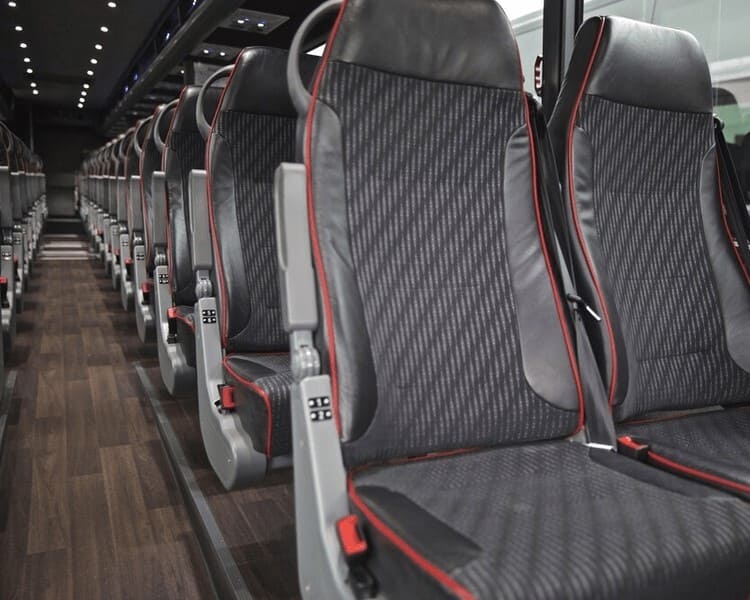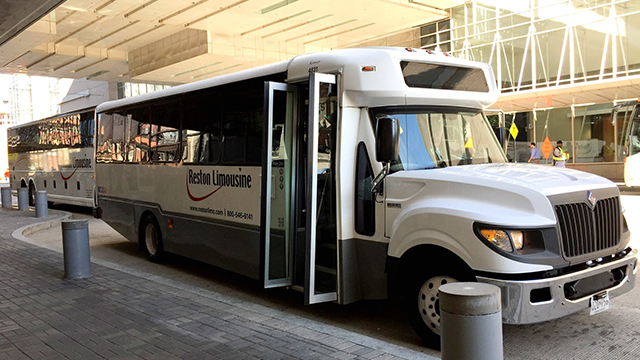20 Best Facts For Choosing Event Transportation Sites
20 Best Facts For Choosing Event Transportation Sites
Blog Article
Top 10 Tips For Scheduling And Flexibility In Employee Shuttle Transportation
Here are ten top suggestions for maximising the flexibility of shuttle services for employees and scheduling.
1. Conduct a Needs Assessment of Employees
Begin by looking at your employees' requirements for scheduling. This can be done through surveys or discussion groups to collect information about employees' preferred time for their shuttles, their shift patterns, and any other particular requirements. Understanding the different requirements of your employees is key to designing the perfect schedule for everyone.
2. Set up a flexible scheduling system
Create a flexible schedule system that can accommodate employee requests. Consider providing multiple shuttle times during the day to accommodate different patterns of work and shifts. Consider offering shuttle services early in the morning to employees working first shift, during the day for those with flexible schedules and at night for those working third or second shift.
3. Utilize Real-Time Data for Adjustments
Utilize technology that allows you to obtain real-time information on the number of employees and their patterns of travel. This data can help you to make informed decisions about when to add new routes or modify the times of shuttles. By studying data on usage trends, it is possible to optimize the scheduling of shuttles in order satisfy demand.
4. Set Up a Reservation System
You might consider implementing an online reservation system for shuttle service. This will allow your employees to book their seats prior to the time and ensures that you will have enough seats to meet the demand. A reservation software can help you identify high-demand times for travel and then alter your schedule accordingly.
5. Communication Schedule Changes that Work
Be sure to communicate any changes in the schedule of shuttles to all employees clearly and swiftly. Using multiple communication channels including intranets, emails, and mobile apps, to notify employees of changes is a good idea. Communication that is clear helps avoid confusion and ensures that employees can organize their schedules in a timely manner.
6. Monitor Peak Use Times
Monitor the frequency of shuttle use to determine peak times during which demand is highest. This information can guide you in making adjustments to the schedule to provide additional shuttles during busy times. By proactively addressing peak usage and ensuring that you have a better the reliability of service and decrease the wait time for employees.
7. Offer On-Demand Services
You could consider offering an shuttle services on demand for employees who have varying timetables. It is possible to utilize apps that allow employees to make requests for shuttles according to their schedules. This will guarantee that transportation is always available. On-demand solutions are a great way to allow employees to be more flexible working in irregular hours.
8. Consider Hybrid Models
Utilize hybrid scheduling models that combine routes that are fixed with flexible ones. For instance, you may create routes during peak hours but allow the flexibility of pickups and drop-offs during off-peak hours. This method can be used to improve efficiency while accommodating the diverse work schedules of employees.
9. Receive feedback to continuously improve
Encourage employees to offer feedback on the shuttle schedule and overall experience of transportation. Through regular review of the feedback, you can identify areas of improvement and adjust your schedule. Being involved in the process will create a sense of ownership among employees and help make the shuttle service more successful.
10. Evaluate and adjust for seasonal changes
Be mindful of changes in the seasons, for example, holidays vacations, summer vacations or shifts in the working hours. Continuously review and modify the schedule of shuttles to accommodate these fluctuations in employee availability. Flexibility is a great way to maintain high levels and satisfaction.
These tips will enable organisations to design a scheduling system for employee transportation that is flexible and efficient, and will ensure that the service meets diverse workforce requirements while maximizing efficiency and satisfaction. Read the top rated employee transportation for site info including luxury transportation, ground transportation from miami airport, shuttle atl, lax airport transportation services, airport car service near me, shuttle van, shuttle airport bus, dallas airport shuttle to hotels, top transportation, bus shuttle service and more.
Top 10 Tips For Route Planning And Efficiency In A Corporate Event Transportation Service
Here are 10 top suggestions to plan routes and maximize the efficiency of a corporate transportation service.
1. Analyze Attendees Locations
Begin by collecting the details of the places your guests will be arriving. This can be accomplished through registration forms, or RSVPs which include addresses or general information about the location. It is important to know the geographical spread of the participants in order to create routes that are efficient and minimize the time spent traveling.
2. Use Route Optimization Software
Incorporating software for route optimization to study the traffic patterns and road conditions can help you to determine the most efficient routes. These programs allow you to identify the most efficient routes and avoid congested regions. They also offer alternative route options if required. Using technology to plan routes can dramatically improve the overall efficiency.
3. Plan your journey for high traffic times
Make sure you plan your travel plans in the time of peak traffic. Examine historical traffic statistics to determine when congestion usually is experienced in the surrounding areas of the venue. To avoid delays, adjust shuttle schedules in order to ensure attendees arrive on-time and without waiting.
4. Establish Multiple Pickup Points
Create multiple pick-up locations according to the location of attendees. This can improve convenience and reduce travel times. You could choose from hotels, popular places to gather or even public transportation hubs. You can simplify the process of transportation by offering several pick-up locations. This can also cut down the distance to the event.
5. Create a detailed transportation schedule
Create a thorough schedule of transportation that lists the estimated time of travel for each route along with the time of departure and arrival. The schedule should be distributed prior to the event to all participants to ensure that they are aware of when their shuttles will arrive. A well-organized schedule will help ensure that the transportation service runs smoothly and minimizes confusion.
6. Incorporate Buffer Times
Incorporate buffer time into your schedule of transportation to accommodate unexpected delays, for example delays in traffic or weather conditions. You reduce the likelihood that your attendees will miss out on important parts of your event due to transport issues by adding additional time between pickups.
7. Monitor Traffic in Real-Time
Use real-time traffic tools the day before the event to adapt dynamically. If a particular route is crowded it is possible to redirect buses is a way to ensure that efficiency is maintained and attendees are able to reach their destinations with no significant delays.
8. Select a Transportation Coordinator
Choose a transportation coordinator who will be accountable for overseeing the shuttle service throughout the event. The coordinator will oversee logistics, communicate with drivers, and deal with any problems that arise in real time. A point person will ensure that the transport operation is run smoothly and efficiently.
9. How to communicate with attendees
Inform attendees about the shuttle schedules and pick-up points as well as any changes that could be made. Making use of mobile applications, SMS updates, or printed materials can enhance communication and ensure that attendees are informed of any changes to the transportation schedule.
10. Get Feedback Post-Event
After the event, ask for feedback from the attendees on their experience with transportation. Inquire about the quality of the routes and shuttles. Additionally, inquire about their overall satisfaction. The feedback received will be used to pinpoint weak points and strengths in the transportation plans. These can then be improved in future events.
If you follow these guidelines companies can efficiently design routes and increase the efficiency of corporate event transportation services. The planning of routes ensures that attendees arrive at the event on time and provides a a positive experience for the guests. Transportation planning is vital to the successful running of any corporate event. Have a look at the best event transportation service hints for website tips including transport and logistics, plan logistics, transportation management, transportation solutions, transportation management solutions, transport job, transport planning, coach transportation, transport mgmt, transport manager job and more.